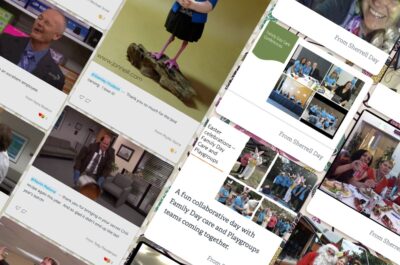Introducing an employee recognition program to your organization can be pretty exciting (and transformational). It enhances employee morale, boosts engagement, and cultivates a positive workplace culture.
However, a successful rollout requires thoughtful planning and execution (but don’t worry, you’ve got this!). In just a few simple steps (well, okay, eight steps), we’ll show you how to roll out an employee recognition program that’s effective and met with enthusiasm.
What is an Employee Recognition Program?
An employee recognition program is a structured initiative designed to acknowledge and reward employees for their hard work, achievements, and contributions to the organization. These programs are a systematic approach to creating a culture of appreciation by engaging staff through employee rewards, recognition, and other initiatives.
What is the Purpose of Employee Recognition Programs?
At its core, an employee recognition program aims to create a positive work environment where employees feel valued and motivated by pointing out the good employees do regularly.
When rolled out effectively, employee recognition programs can profoundly impact an organization. According to a study by Harvard Business Review, companies with recognition programs that effectively improve employee engagement experience a 14% increase in productivity and a 31% reduction in voluntary turnover. Furthermore, employees who feel appreciated are more likely to recommend their workplace to others, enhancing the organization’s reputation as a great place to work.
When employees know their efforts are noticed and appreciated, they are more likely to be engaged and committed to their work. Organizations can create a more motivated, productive, and loyal workforce by valuing and recognizing employees, driving overall success and growth.
How to Roll Out Your Employee Recognition Program

If you’ve created a plan and are ready to start but are unsure how to roll out an employee recognition program, don’t worry. Launching the program is simple (and, honestly, the best part). Here are our eight steps to follow when implementing the program that will get you to see the fruits of your labor in no time:
Step 1: Define Clear Objectives
Identifying the program’s goals is crucial so that there is an outline to reference as time goes on. Often, these objectives include boosting employee engagement, reducing turnover, or fostering a more positive workplace culture.
As you define these goals, you and organizational members can use them to guide every subsequent step and ensure the programs align with organizational expectations. They can also help measure success and determine next steps.
Step 2: Choose the Right Recognition Software
Choosing the right platform is another fundamental step. Selecting a user-friendly and versatile enterprise platform like Kudoboard can significantly enhance the program’s success.
Employee recognition software can aid your program by housing recognition in one place. From employee reward to peer-to-peer recognition, an employee recognition platform can make launching and maintaining your program easier and more accessible.
When deciding on a platform, choose one that matches your culture, goals, and budget. There are varying recognition software options (each with their own price point), with each offering their own flavor of recognition.
Step 3: Educate Leadership
Before you’re ready to roll our your employee recognition program, the next step is to teach leaders about the plan and implementation. Involving leadership is essential for setting a positive tone and encouraging widespread participation. When leaders actively endorse and participate in the program, it sends a strong message about the importance of recognition and can significantly boost employee buy-in.
Your job at this point is to create and encourage enthusiasm by explaining the benefits of an employee recognition program, communicating the details, and teaching them how to accomplish it. Educating your leadership will reinforce commitment and build their confidence as they launch the program among their employees.
Step 4: Develop a Guide
Effective communication is key to a successful rollout. Developing a comprehensive communication plan that clearly explains the program’s purpose, benefits, and how employees can participate is crucial.
To help, use various channels such as emails, meetings, and internal social networks to ensure the message reaches everyone. Clarity and transparency in communication can help increase trust and generate some positive vibes.
Step 5: Train Employees
Once everyone’s on board, it is time to introduce the program and train your employees. Providing thorough training ensures that all employees understand how to use the recognition platform and appreciate the value of participating.
Training sessions should be engaging and practical, offering step-by-step guides, examples of successful recognition, and Q&A sessions. This will help build confidence and encourage active involvement from the start.
Step 6: Launch Your Program
The launch itself should be enthusiastic and engaging, creating a sense of excitement and anticipation. Go big or go home! Organize events, send out celebratory emails, and use creative announcements to generate buzz around the new program. This initial excitement can set a positive tone and encourage early adoption.
Step 7: Create an Employee Recognition Committee
Establishing a committee to spearhead and monitor the program can further bolster success. This employee recognition committee, composed of employees from different departments and levels, can provide diverse perspectives and ensure the program resonates across the organization.
The committee’s role includes promoting the program, gathering employee feedback, and recommending improvements. This participatory approach can enhance the program’s credibility and acceptance among employees.
Step 8: Monitor and Adjust
No matter how well-crafted the program is, changes will inevitably be needed. It’s essential to monitor the program’s performance and be prepared to make adjustments based on feedback and observed participation levels. Regularly check in with employees to gather their input and be flexible in adapting the program to meet their needs better.
Continuous improvement will help maintain the program’s relevance and effectiveness over time.
Roll out your program with the right software
Start off on the right foot with a fun, scalable, and equitable employee recognition platform
Common Problems with Introducing an Employee Recognition Program

Despite the best efforts, rolling out an employee recognition program can encounter challenges. But don’t fret! Being aware of these potential pitfalls can help you navigate them effectively.
Overcoming Negativity and Skepticism
Some employees might view the program with skepticism or negativity, doubting its sincerity or effectiveness. To counter this, be transparent about the program’s purpose and benefits. Involve employees in the design process to increase buy-in and ensure the program feels relevant and fair.
Additionally, don’t be afraid to share the program’s successes. If analytics show that retention rates are improving, employee engagement is up, or other objectives are accomplished, share the good news. This can help reduce skepticism by objectively demonstrating that the program is working.
Tackling Poor Communication
Ineffective communication can lead to confusion and low participation. Use clear, concise language in all communications utilizing various channels to reach everyone. Create ways for employees to ask questions and provide feedback. Regularly promote the program to keep it in people’s minds. It’s like hosting a big event—you want everyone to know about it and feel included.
Boosting Adoption Rates
If employees don’t adopt the program, its impact will be minimal. To encourage initial engagement, make the recognition process simple and intuitive, and offer small incentives for participation. The simpler and more rewarding it is for an employee to participate, the more likely it is to be adopted.
Another way to help with adoption rates is to regularly promote the program and provide ongoing training to ensure everyone understands how to participate.
Ensuring Consistent and Fair Recognition
If the program is not implemented consistently across departments, it can create confusion and disengagement. If not all employees see the same amount of recognition, feelings of unfairness might develop.
Train managers and leaders on the importance of consistent recognition, provide clear guidelines and monitor activities to ensure even distribution. Also, leaders should actively seek ways to recognize all employees as evenly as possible to avoid feelings of favoritism.
Lack of Leadership Support
Employees might not take the program seriously if leaders are not visibly participating. Your leaders are vital to the success of your program. While peer-to-peer recognition is important, the greatest impact comes from top-down recognition from leadership. Therefore, be sure your managers and team leads are actively engaged in your program.
How to Course Correct an Employee Recognition Program Rollout
Launching a new program in your organization is bound to have some hiccups. If you see that your employee recognition program is encountering some roadblocks, don’t fret. It isn’t too late to take a detour and a new route. Here are steps to turn things around and get your program back on track:
- Gather Feedback: First, figure out what is wrong by collecting feedback from various sources. Ask them about their experiences, perceptions, and any obstacles they’ve faced with the program. Conduct surveys, hold focus groups, or set up one-on-one meetings to collect feedback.
- Analyzing the Data: Dive into the feedback and data to identify common themes and specific issues. Look for recurring complaints or suggestions and understand what might be causing low participation. This analysis will help you pinpoint where adjustments are needed and avoid unnecessary changes.
- Revising the Program: Based on your findings, make the necessary changes. Simplify processes if they’re too complicated, ramp up communication if awareness is low, or revise the criteria if employees feel they are unfair.
- Communicate Changes: Clearly communicate what has changed and why. Share success stories and host Q&A sessions or workshops to explain the changes and gather additional feedback.
- Re-launching the Program: After making adjustments, plan a relaunch to reset perceptions and generate renewed interest. Highlight the changes and celebrate new successes.
- Embrace Change: Recognize that the program may need ongoing tweaks. Establish a regular review process to monitor engagement, track participation rates, and review feedback. Be sure to stay flexible and make changes as needed.
Benefits of a Smooth Employee Recognition Rollout

Getting the rollout right from the start brings immediate results. While it is possible to correct the course, it will be easier to sustain it when done correctly at the beginning. Much like a first impression’s impact at a job interview, the same goes for your employee recognition program.
Therefore, you must do your best to properly hype up the initiatives and do adequate research beforehand to guarantee that the systems you are launching will work. Putting in the time and effort to do this will lead to a host of benefits.
Here’s how a smooth launch can positively impact your workplace:
- Immediate buy-in: When a rollout goes smoothly, the organization will find less resistance towards the program. If an employee recognition program begins with only minor hiccups, it builds greater trust in the system. If the program starts and people immediately see flaws, unfairness, or a lack of participation, the program may die on the spot (no pressure).
- Employees will feel valued and appreciated: Your program’s primary goal is to show that you care and appreciate what a team member does daily to lead the company to success. A well-executed recognition program will make that happen immediately, which means your employees’ happiness level will also improve.
- Improved engagement: Employees who feel valued and recognized are more likely to be engaged with their work and committed to company goals. Improved employee engagement means employees are more productive, motivated, and committed to their work.
- Greater job satisfaction: Regular recognition boosts morale, job satisfaction, and employee experience. Employees who feel recognized for their efforts will likely have a positive attitude toward their jobs and the organization.
- Greater employee retention: When employees know they are of value to the company and are happy at work, they are less likely to seek employment elsewhere. Recognition programs can strengthen employees’ emotional connections to the organization, fostering loyalty and reducing the costs and disruptions associated with high employee turnover rates.
- Stronger teams: When employees regularly recognize each other’s efforts, it strengthens team bonds. A culture of recognition promotes collaboration, trust, and mutual respect among team members. When done correctly, it can create a close-knit community where everyone feels supported.
- Improved workplace culture: Recognition fosters a positive and supportive work environment where employees feel respected. A positive workplace enhances teamwork, as employees are more likely to support and recognize each other’s contributions. A culture of employee appreciation and mutual respect leads to stronger collaboration, better communication, and a more cohesive workforce, all of which are essential for success.
What Successful Employee Recognition Looks Like
Once your program is established, and even before, there are some best practices for giving effective recognition that should be followed. Doing so will keep your program thriving and your organization benefiting from everyone’s involvement.
Successful employee recognition looks like this:
- Frequent Recognition: Instead of waiting for a semi-annual review to hand out praise, find ways to acknowledge their impacts frequently. Employees will feel more appreciated when receiving frequent remarks on how well they are doing. Additionally, recognizing often reinforces the behavior while also making it more genuine.
- Be Specific: While general comments are better than nothing, they run the risk of feeling disingenuous. In contrast, when your comment is attached to a specific behavior, the person will know precisely what is appreciated, making it more likely that they will do the behavior again.
- Be Genuine: Although the company encourages members to recognize one another, appreciation should not feel forced. Instead, comments should be genuine and express gratitude for something that the person actually appreciates. Doing so will avoid the comments feeling forced or transactional.
- Recognize Promptly: The best acknowledgments happen as soon as the good work is seen. If you delay, you lessen the impact of your words. The good thing is acknowledging something can be as simple as an expression while you pass them in the hallway.
- Include Everyone: In a successful employee recognition program, all employees should participate and receive recognition. Providing examples to management and peers of things they can express gratitude for that may not be success-based can help avoid repeatedly acknowledging the same people.
Rolling Out Your Employee Recognition Program with Kudoboard
Now that you know how to roll out an employee recognition program, it’s time to act. But you don’t have to do it on your own; all you need to do right employee recognition software to support your team.
To lead your program to success, roll out your program with Kudoboard. The platform is designed to streamline onboarding and make employee recognition easy, fun, and effective.

Centered around creating boards for shout outs, celebrations, events, and more, its user-friendly interface makes recognition simple. Leaders, peers, and teams use the platform to leave engaging messages of support and appreciation, and the admin features make creating boards and reporting success easy.
How Kudoboard Can Enhance Your Rollout
- Dedicated Support: You get access to a dedicated customer success rep that helps tailor the platform to your company’s needs and provides ongoing support. They offer onboarding assistance to guide you through the initial setup and launch, training sessions for administrators and users to ensure everyone knows how to use the platform effectively. These reps also provide ongoing support and inspiration to ensure long-term success.
- Customizable Features: The platform is customizable to match your company’s branding and recognition goals. Companies can make boards into birthday cards, retirement cards, DEI discussion boards, employee shout-out boards, and more. The variety of options makes it a seamless part of your company culture.
- User-Friendly Interface: The platform is intuitive and easy to use, removing any barriers your employees might encounter. So, you will see higher adoption rates among team members.
- Engaging Recognition Options: Kudoboard provides various ways to recognize employees, from digital cards to videos, making recognition more meaningful and personal.
- Analytics and Reporting: Track the success of your recognition program with detailed analytics and reports, allowing for data-driven adjustments and improvements.
- Scalable Solutions: Whether you’re a small business or a large corporation, Kudoboard scales to meet your needs, ensuring every employee feels recognized.
- Integrates with Other Platforms: Kudoboard integrates well with other tools and platforms, ensuring seamless operation within your existing systems.
Ensure a smooth rollout and ongoing success of your employee recognition program with Kudoboard. When you do, you will have a trusted partner by your side, ready to help you navigate any challenges and celebrate your successes.
Your Employee Recognition Program Matters
Creating and implementing an employee recognition program is time-consuming and can be overwhelming. However, the efforts you’re making to improve your organization matter. Workplace appreciation can be one of the greatest factors in a company’s success. But above all of that, establishing a culture where people know they will be encouraged and built up is pretty special.
While rolling out an employee recognition program requires careful planning and continuous improvement, the steps above (plus the right employee recognition software, will create a plan that improves employees’ lives.
So, roll up your sleeves, gather your team, and get ready to launch a recognition program that will make your employees feel like stars.
Level up your employee recognition
With a platform built for easy onboarding and authentic appreciation.




